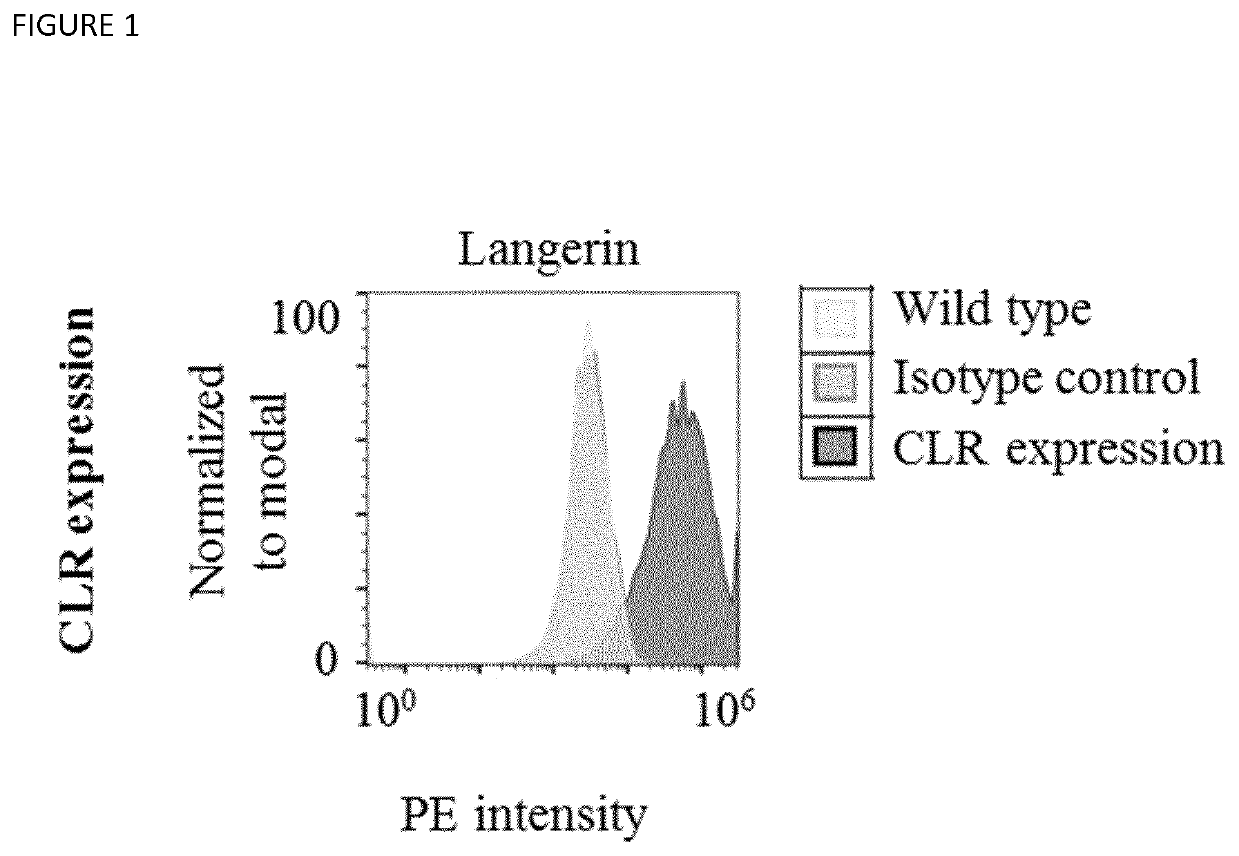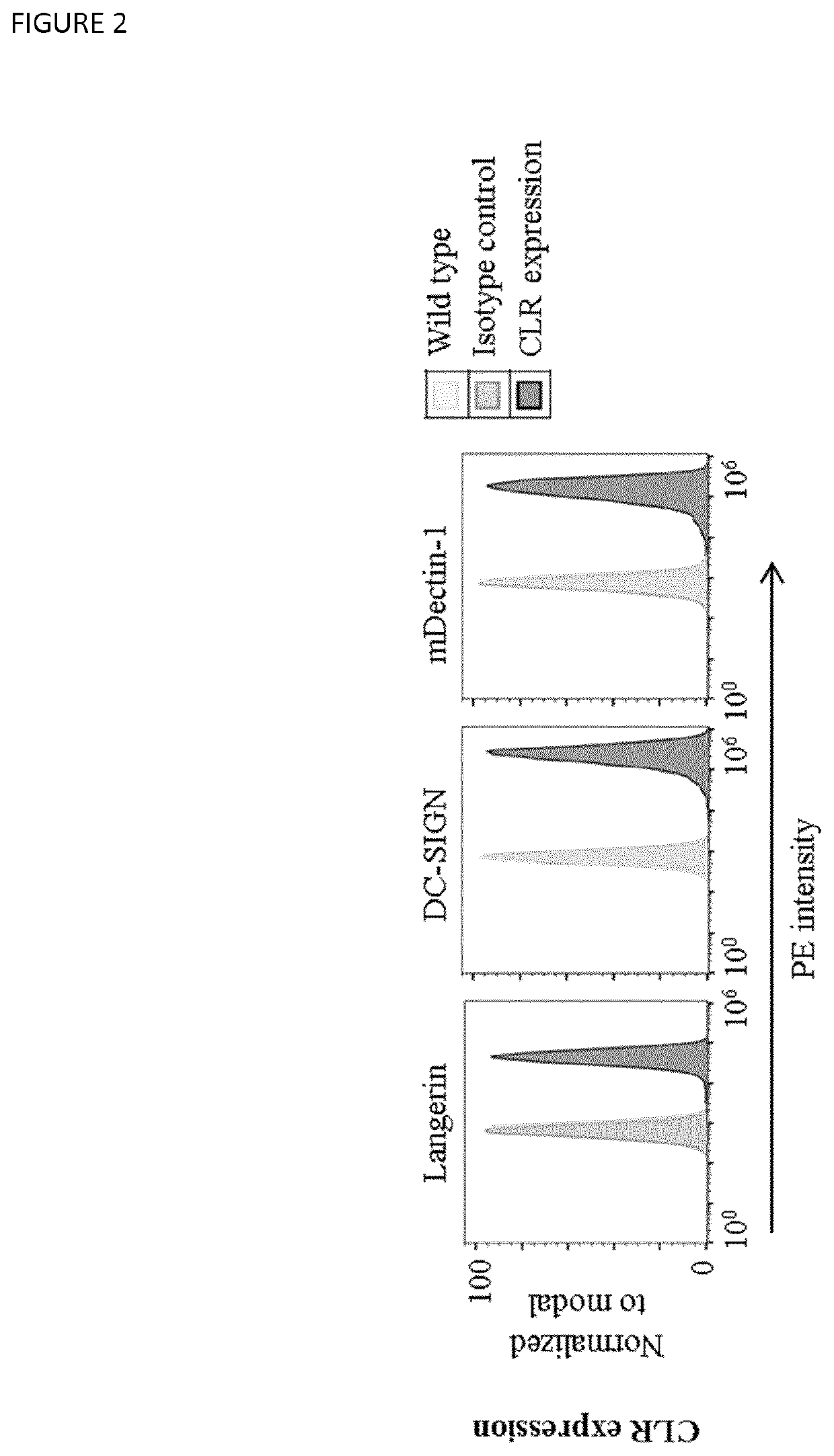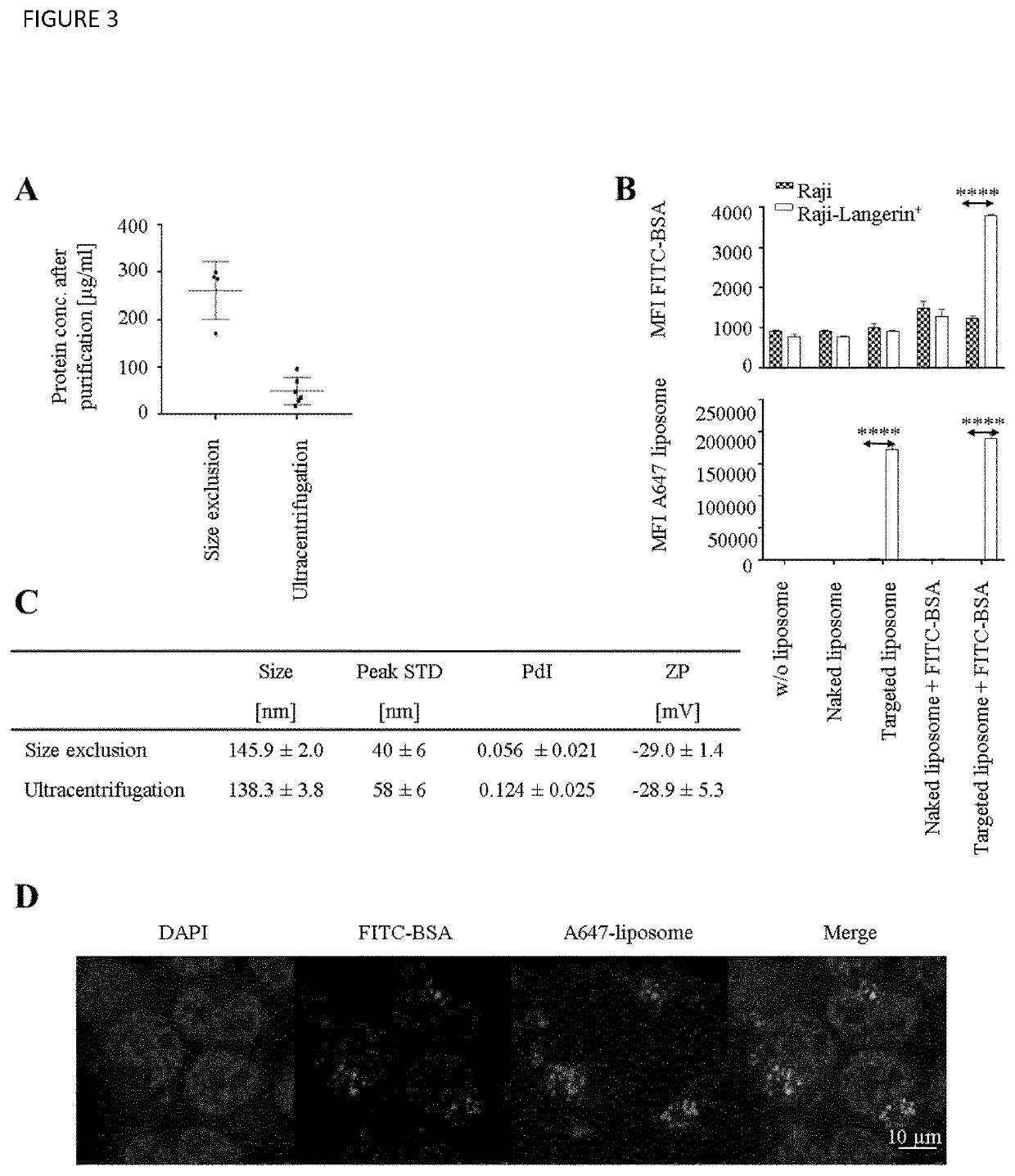Langerin+ Cell Targeting
a technology applied in the field of a cell and a target, to achieve the effect of effective delivery of cargo, low accessibility, and sufficient affinity
- Summary
- Abstract
- Description
- Claims
- Application Information
AI Technical Summary
Benefits of technology
Problems solved by technology
Method used
Image
Examples
example 1
Langerin-Expressing Hek293 Cells
[0426]The human embryonic kidney cell line Hek293 was maintained in DMEM medium with GlutaMax supplemented with 10% FCS (Biochrom) and 100 U / ml Penicillin-Streptomycin. Cells were cultured to 70% confluence and subcultured with trypsin every 2-3 days. Unless stated otherwise, all media and supplements were purchased from Thermo Fisher Scientific. Cells were grown under controlled conditions at 37° C. and 5% CO2. Cells were monitored with a light microscope (IT40 SPH, VWR) and cultured in Petri dishes (Corning). Cells were subcultured with the proteolytic enzyme trypsin in combination with 0.25% EDTA. In routine subculture, all cells were centrifuged at 500 g for 3 min (Heraeus Megafuge 8R, Thermo Fisher Scientific). The supernatant was aspirated and cells were resuspended in fresh growth medium. As a quality control, cells were frequently tested free from mycoplasma contamination using a MycoAlert®Mycoplasma Detection Kit (Lonza). No contamination was...
example 2
CLR-Expressing Raji Cells
[0433]The human Raji cell line from hematopoietic origin was grown in RPMI base medium containing 10% FCS, 100 U / ml Penicillin-Streptomycin and GlutaMax. Cells were maintained between 0.5-3 Mio cells / ml by addition or replacement of the complete growth medium and grown, maintained, monitored and stored under the same conditions as mentioned for Hek293 (see above). The cDNA ORF clones of DC-SIGN and mouse Dectin-1 were also transferred from a pcDNA5 / FRT / V5-His-TOPO TA vector (life technologies) into a RP172 vector (Koymans et al., 2016, Int. J. Mol. Sci., 17, 7, 1072) for stable expression in Raji cells by transduction. Cloning was done using Gibson Assembly, according to the manufacturer's instruction (see above). DNA concentration was measured with a nanodrop, and plasmid DNA was sequenced. Transduction of human Langerin, DC-SIGN and mouse Dectin-1 into Raji cell lines was conducted as described for Hek293 cells (see Example 1). Recombinantly expressed rece...
example 3
Synthesis of the Targeting Ligand
[0434]
[0435]Glucoseamine hydrochloride (46.4 mmol, 10 g) was dissolved in a aqueous NaOH solution (1M, 47 mL) at 0° C. p-anisaldehyde (47 mmol, 5.7 mL) was added dropwise over 5 min and the reaction was left to stir at 0° C. for 2 h during which the solution solidified. The crystalline slurry was suction-filtered, washed with H2O and small amounts of Et2O and dried under high vacuum at 45° C. to obtain 1 as a colourless solid in 97% yield (45.34 mmol, 13.48 g).
[0436]1 (40.3 mmol, 11.98 g) was dissolved in pyridine (71 mL) under Ar and cooled to 0° C. Acetic anhydrite (36 mL) was added under stirring, the cooling bath was removed and the mixture was allowed to warm to room temperature under stirring overnight. The mixture was poured into ice water (240 mL). The resulting precipitate was suction filtered, washed with water (350 mL) and dried in high vacuo to obtain 2 as colourless solid in 87% yield (35.15 mmol, 16.36 g).
[0437]2 (35.15 mmol, 16.36 g) w...
PUM
| Property | Measurement | Unit |
|---|---|---|
| Ra | aaaaa | aaaaa |
| pharmaceutical composition | aaaaa | aaaaa |
| waterproofing | aaaaa | aaaaa |
Abstract
Description
Claims
Application Information
 Login to View More
Login to View More - R&D
- Intellectual Property
- Life Sciences
- Materials
- Tech Scout
- Unparalleled Data Quality
- Higher Quality Content
- 60% Fewer Hallucinations
Browse by: Latest US Patents, China's latest patents, Technical Efficacy Thesaurus, Application Domain, Technology Topic, Popular Technical Reports.
© 2025 PatSnap. All rights reserved.Legal|Privacy policy|Modern Slavery Act Transparency Statement|Sitemap|About US| Contact US: help@patsnap.com



